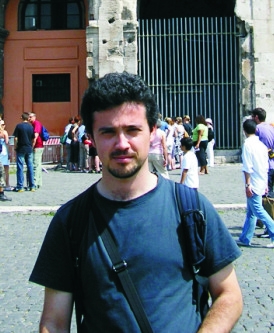Dr. Javier Fullea – Research Scientist (Marie Skłodowska-Curie Fellow)

Dublin Institute for Advanced Studies
Geophysics Section
5 Merrion Square
Dublin 2
Ireland
Tel: +353-1-653-5147 x200
Fax: +353-1-443-0575
Email: jfullea-at-cp.dias.ie
Personal webpage: Javier Fullea
Research interests
- Integrated geophysical-petrological thermochemical imaging of lithosphere and underlying upper mantle using inversion and forward approaches and different data sets at global and regional scales.
- 3D Lithospheric modelling integrating different geophysical data: potential fields, surface heat flow, elevation, seismic velocities, electrical conductivity, and mantle composition.
- Lithosphere-Asthenosphere boundary geometry in the Atlantic-Mediterranean transition (western limit of the Eurasian-African plate boundary).
- Electrical conductivity of the upper mantle minerals
Qualifications
- 2008
- PhD Thesis in Earth Sciences 2008. Universitat de Barcelona and Institute of Earth Sciences “Jaume Almera”(CSIC), Spain
- 2004
- M.Sc. in Geophysics, Universitat de Barcelona, Spain
- 2002
- B.Sc. in Physics (Geophysics), Universidad Complutense de Madrid, Spain
Recent Publications (full list available in personal webpage):
- J. Fullea, A. Camacho, A. Negredo, J. Fernández. (2015) “The Canary Islands hot spot: new insights from 3D coupled geophysical-petrological modelling of the lithosphere and uppermost mantle”, Earth and Planetary Science Letters, 409, 71-88.
- J. Vozar, A. G. Jones, J. Fullea, R. Agius, S. Lebedev, F. Lepape, W. Wei (2014) “Integrated geophysical-petrological modeling of lithosphere–asthenosphere boundary in Central Tibet using electromagnetic and seismic data,” Geochemistry Geophysics, Geosystems, 15 (10), 3965-3988.
- J. Fullea, J. Rodriguez, M. Charco, A. Negredo, Z. Martinec, A. Villaseñor (2015) “Perturbing effects of sub-lithospheric mass anomalies in GOCE gravity gradient and other potential field data modelling: application to the Atlantic-Mediterranean transition zone”, International Journal of Applied Earth Observation and Geoinformation, Special volume: GOCE, 35, 54-69.
- Z. Martinec, J. Fullea (2015) “A refined model of sedimentary rock cover in the southeastern part of the Congo basin from GOCE gravity and vertical gravity gradient observations” International Journal of Applied Earth Observation and Geoinformation, Special volume: GOCE, 35, 70-87.
- J. Fullea, M. R. Muller, A. G. Jones, J. C. Afonso (2014) “The lithosphere-asthenosphere system beneath Ireland from integrated geophysical-petrological modelling II: 3D thermal and compositional structure”, Lithos, 189, 49-64, http://dx.doi.org/10.1016/j.lithos.2013.09.014.
- A. G. Jones, J. C. Afonso, J. Fullea, M. R. Muller, F. Salajegheh (2014) “The lithosphere-asthenosphere system beneath Ireland from integrated geophysical-petrological modeling I: Observations, 1D and 2D hypothesis testing and modelling”, Lithos, 189, 28-48, http://dx.doi.org/10.1016/j.lithos.2013.10.033
Leave a Comment
Last Updated: 22nd March 2016 by Anna
Dr. Javier Fullea
Dr. Javier Fullea – Research Scientist (Marie Skłodowska-Curie Fellow)
Dublin Institute for Advanced Studies
Geophysics Section
5 Merrion Square
Dublin 2
Ireland
Tel: +353-1-653-5147 x200
Fax: +353-1-443-0575
Email: jfullea-at-cp.dias.ie
Personal webpage: Javier Fullea
Research interests
Qualifications
Recent Publications (full list available in personal webpage):
Category: Staff
Geophysics
Latest News
Marcel Merk (Nikhef, Amsterdam)
Flavour Puzzles and the LHCb Experiment
Francesca Vidotto (Western University, Ontario)
Flavour Puzzles and the LHCb Experiment
Covariant Loop Quantum Gravity and Cosmology
Language switcher